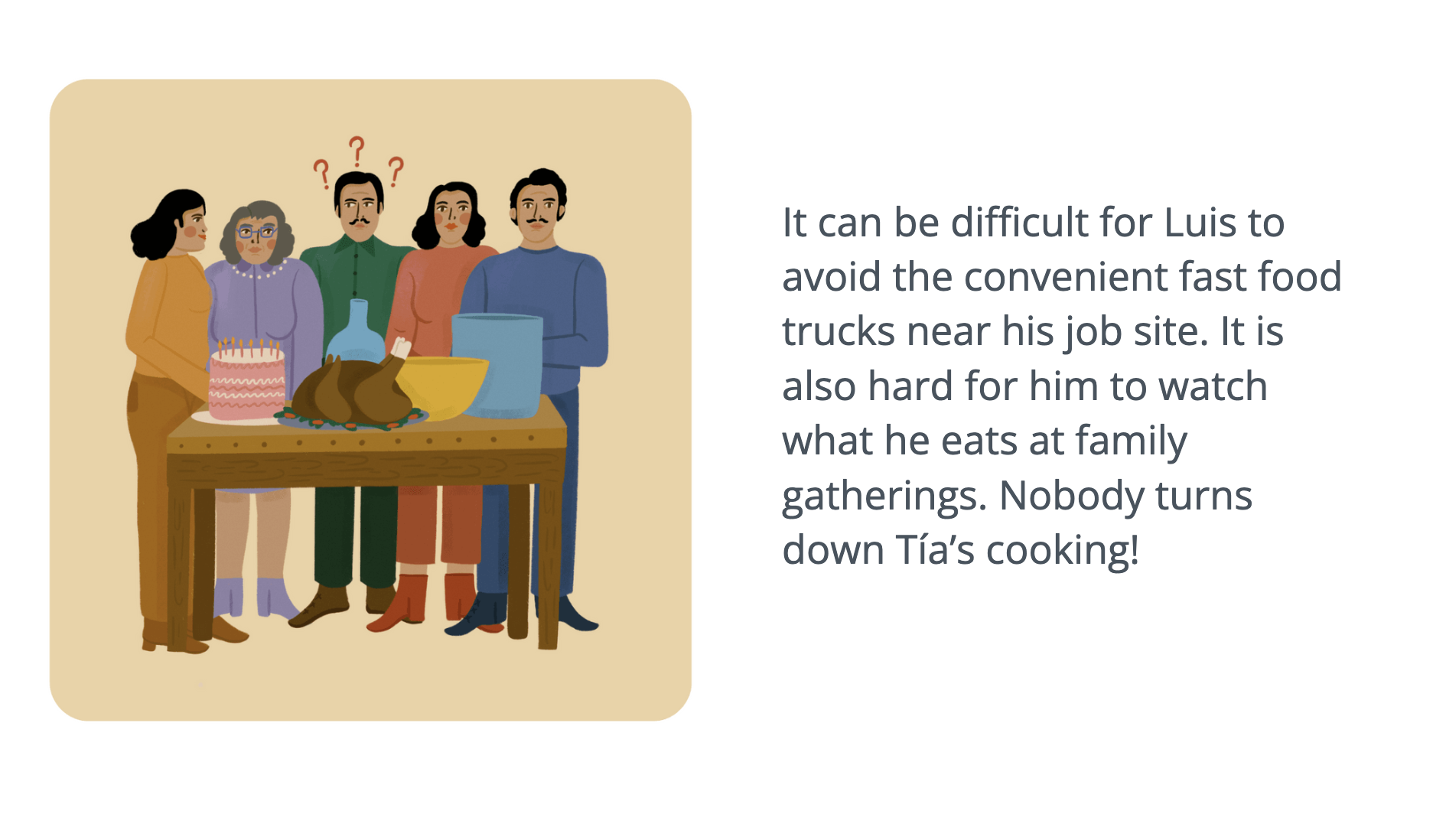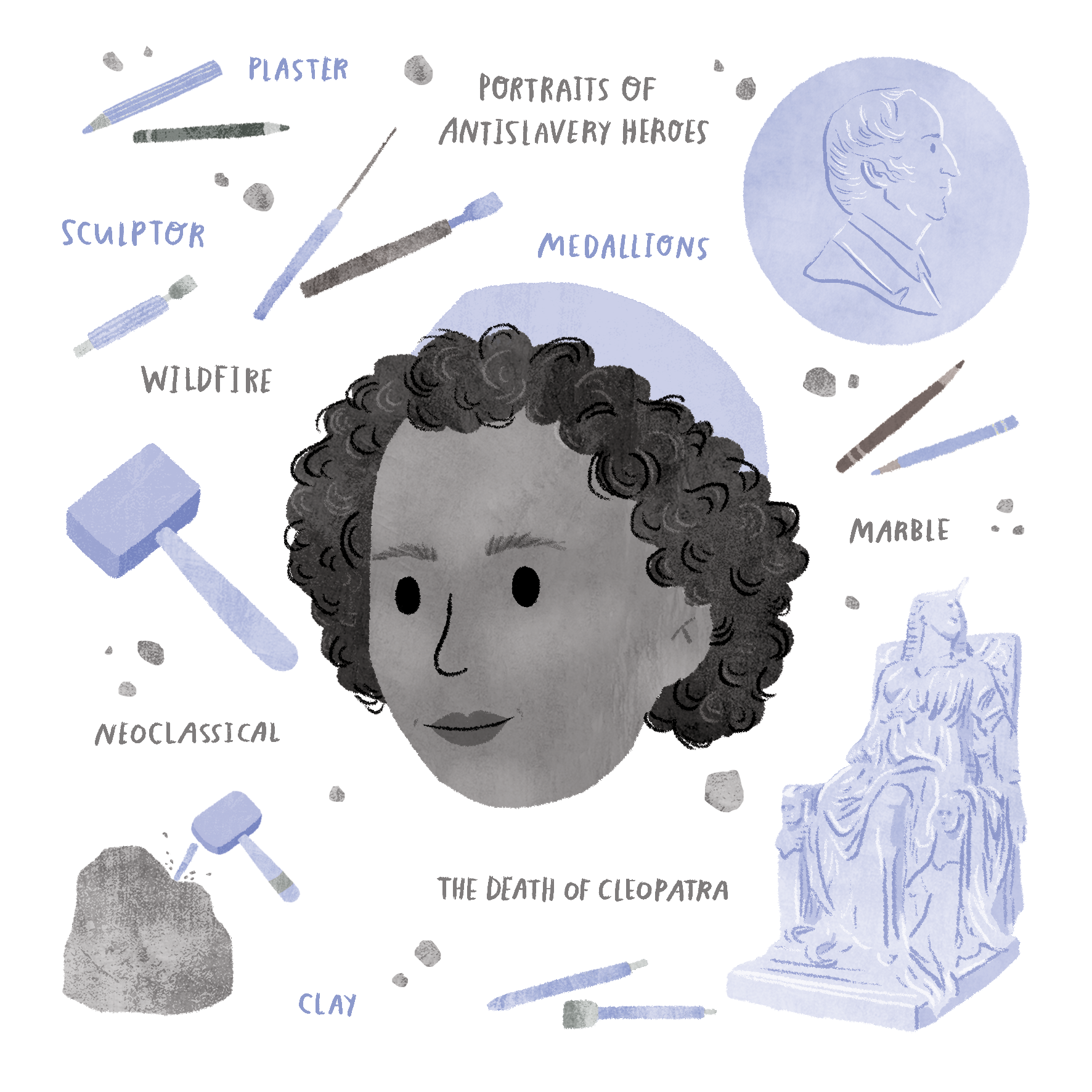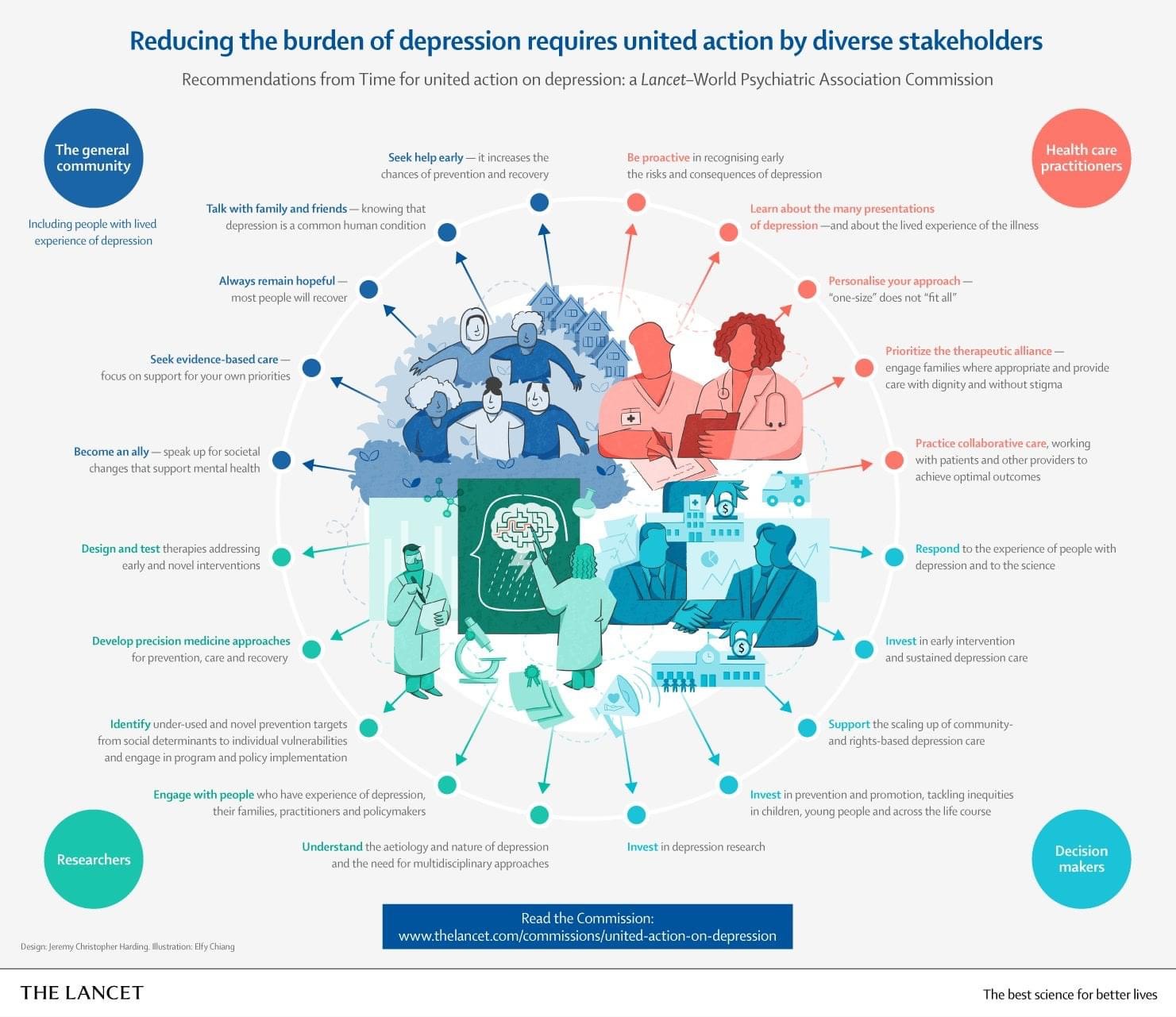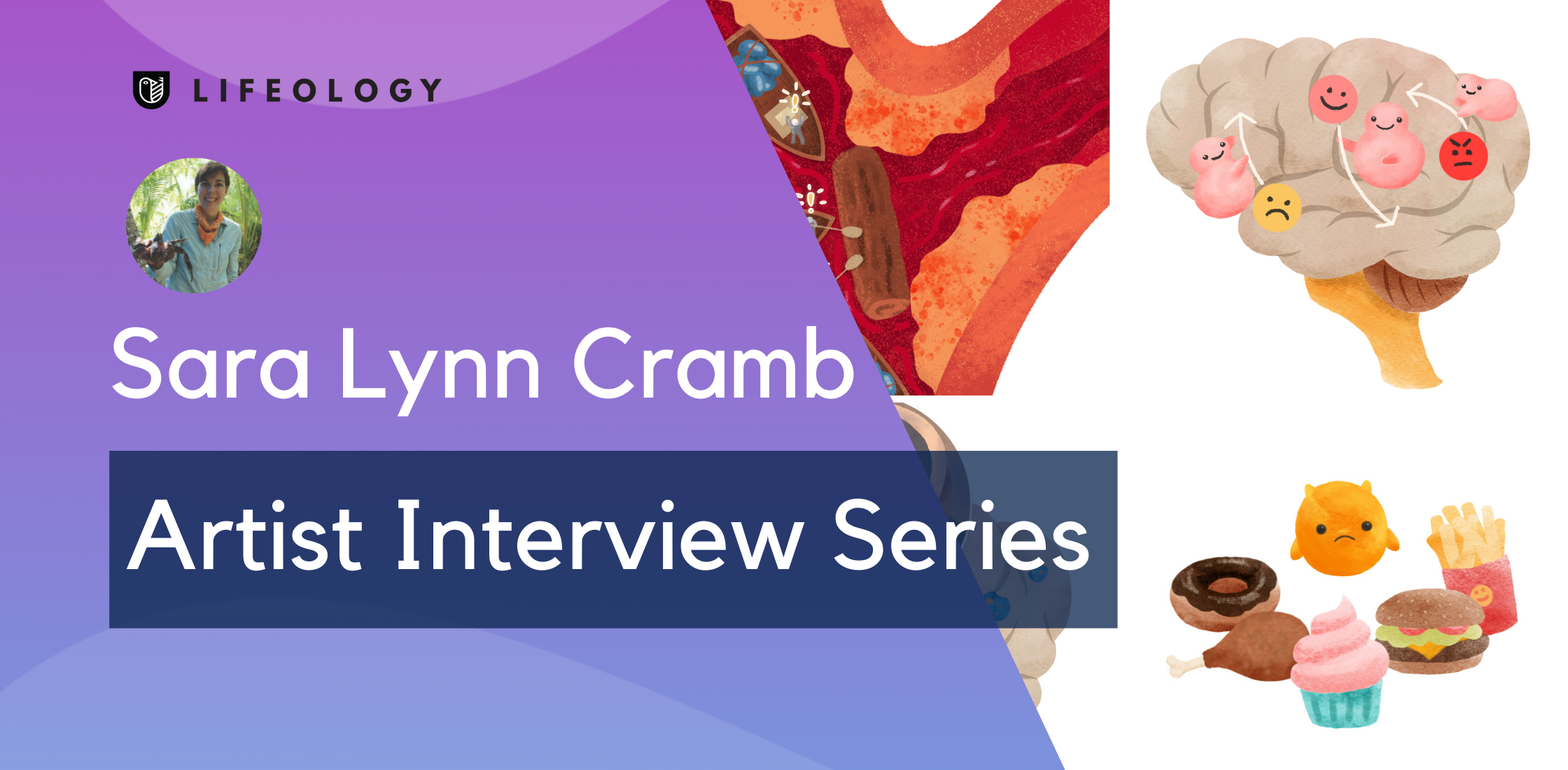
The Lifeology team has been busy working with health professionals, from mindfulness coaches to fitness experts to medical specialists. We have been creating a series of Lifeology courses for LIFE Ascent, a wellness program that gives subscribers the tools needed to improve their health. It is a program based on learning, measuring and establishing habits across multiple areas of health.
This blog features the work of illustrator Sara Lynn Cramb, an illustrator and designer with a love of nature, animals, and travel. Sara creates educational work for children’s books, websites, apps and other media with a focus on engaging and educating young audiences about the natural world.
Can you tell us a little about your background?
Sure, I’m an illustrator and designer that works primarily in educational children’s book publishing. I also create illustrations for websites, mobile apps, and interpretive signage for museums and zoos. I’ve been freelancing for over seven years. Before that I worked as a graphic designer at a health and wellness company creating website designs.
How did you initially find Lifeology?
El Sorojsrisom of ScienceFindsArt.com put me in touch with Paige Jarreau in 2019, when she was initially looking for artists to collaborate with for Lifeology courses.
Have you illustrated a Lifeology card deck before?
Yes, I worked on Why are fruits and vegetables good for me? For LIFE Ascent I illustrated a course on Healthy Fats, Cerebrovascular Health, and another on Berries and Cancer.
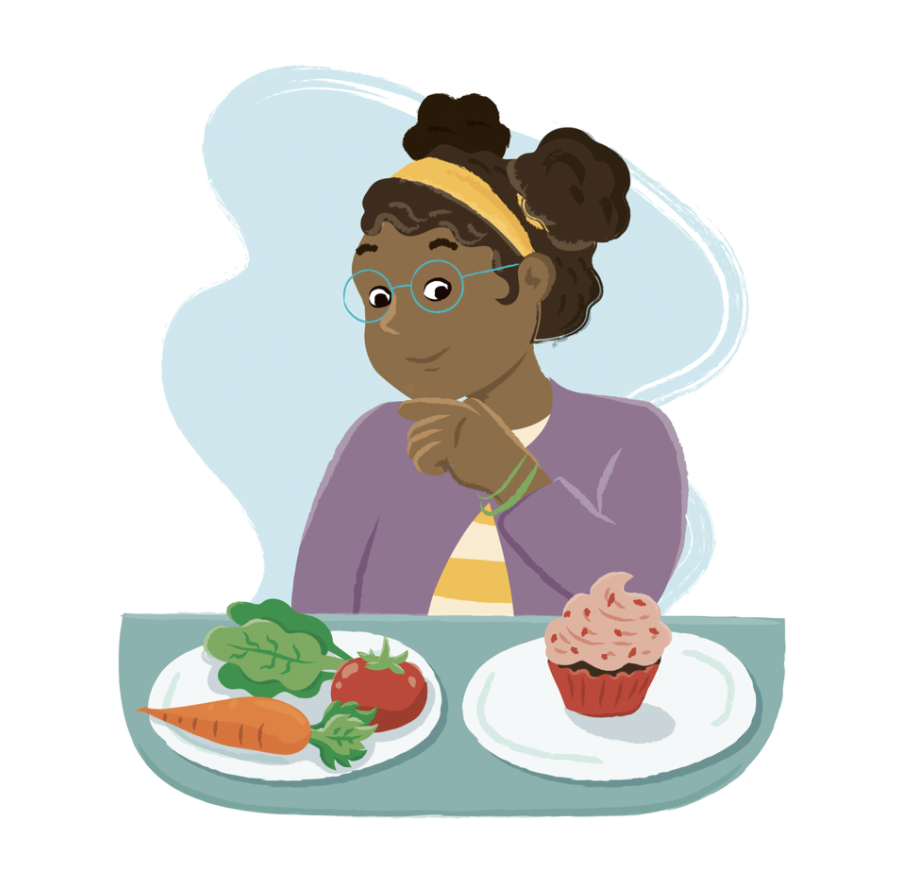
Would you consider yourself a SciArtist?
Yes, the focus of much of my work is educational and informed by science. I’ve illustrated everything from organs to cells to the solar system and a whole lot in between for publishers, museums, universities, and educators.
The courses you illustrated were nutrition courses. Let’s focus on the Healthy Fats course. When looking at the course script, what were your initial impressions?
I thought this course had a lot of beneficial information and lots of opportunities for interesting character development. The idea for cute little characters representing different types of fats jumped right into my head and I think it works well for the course.

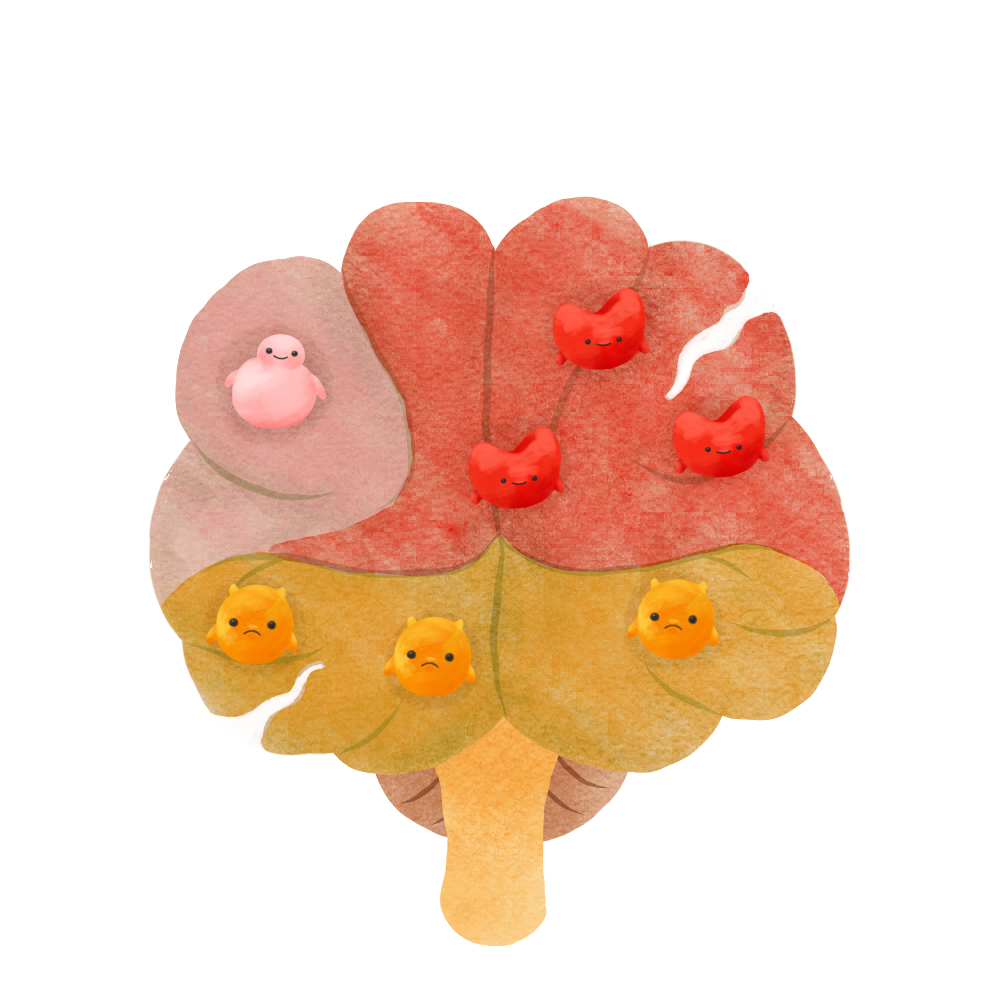

Are visual notes a useful starting point? Did you make any decisions to develop ideas further?
Sometimes, they can help get the ball rolling if I have a creative block or help me to establish the general visual theme for the course. I like to use them as a starting point to jump off into other ideas. If there is something specific the author needs to be included it is helpful to have that in the notes.
Do you use storyboarding in other work?
Yes, quite a bit. I often illustrate children’s books and it can be very helpful to storyboard those out, especially if it is a storybook. It’s important to know how page turns will affect how your audience will view the art. I also create Prezis for some of my design clients and it’s helpful to storyboard those in order to better understand the flow. The practice of making a storyboard for my LIFE Ascent projects is invaluable. It allows me to create a connected story with memorable references to the key points in the course.

Storyboard drawings are rough thumbnail sketches that give a quick visual idea and overall flow of the course. Storyboard images are then reviewed, modified and refined.
Can you tell us a little more about how you get from visual idea to storyboard image to final rendered piece?
I layer in my visual notes on the course overview and take in any feedback offered by the other collaborators. Once I have a good idea where the visuals are going I draft up the storyboard sketches and present those, along with two rendered cards (this shows where I’m thinking of going with the color art, including establishing a color pallet), to Paige and Elaine for feedback. I make any requested changes and then start on color art. To create the color art I bring my hand-drawn sketches into Photoshop or Fresco and start to layer in color and texture using my favorite brushes. This is done for the roughly 30 individual illustrations created for each course. It takes a lot longer than the timelapse video would suggest! If animation is requested I add that after finishing the color rendering, using a simple 4 frame animation method in Photoshop. I then turn in the color art and make any changes as requested. Then the final art is ready to go!

Rendered images from the Cerebrovascular Health course by illustrator Sara Lynn Cramb.
What are your illustration tools of choice and why? Any recommendations to those starting out?
I like to use a mix of Adobe Illustrator, Photoshop, and Fresco. I like the ease of being able to scale my art to any size with Illustrator, and the amount of texture I can create with the brushes and other tools in Photoshop and Fresco. As far as recommendations go, take the time to learn the programs or materials you are using. I’m always learning new things while creating my work and I love it!
Did you learn anything from your course illustration? About your artwork, health info or otherwise?
Yes, I’m always learning new techniques with every illustration I make, which is one of my favorite things about my job! I learn new health info with every course as well. I feel a lot less bad about enjoying olive oil and nuts now, knowing those healthy fats are good for my brain.
Tell us a little more about your other types of Art. Do you sell art?
I create illustrations for children’s books, mobile apps, websites, and museum displays. Most recently I illustrated an educational dinosaur activity book for Rockridge Press. For the last year or so I’ve also been creating monthly nature coloring pages that focus on animals and include interesting scientific facts combined with opportunities for artistic expression. You can find most of the books I’ve illustrated, and my Redbubble store full of stickers, shirts, and tote bags, in the shop section of my website.
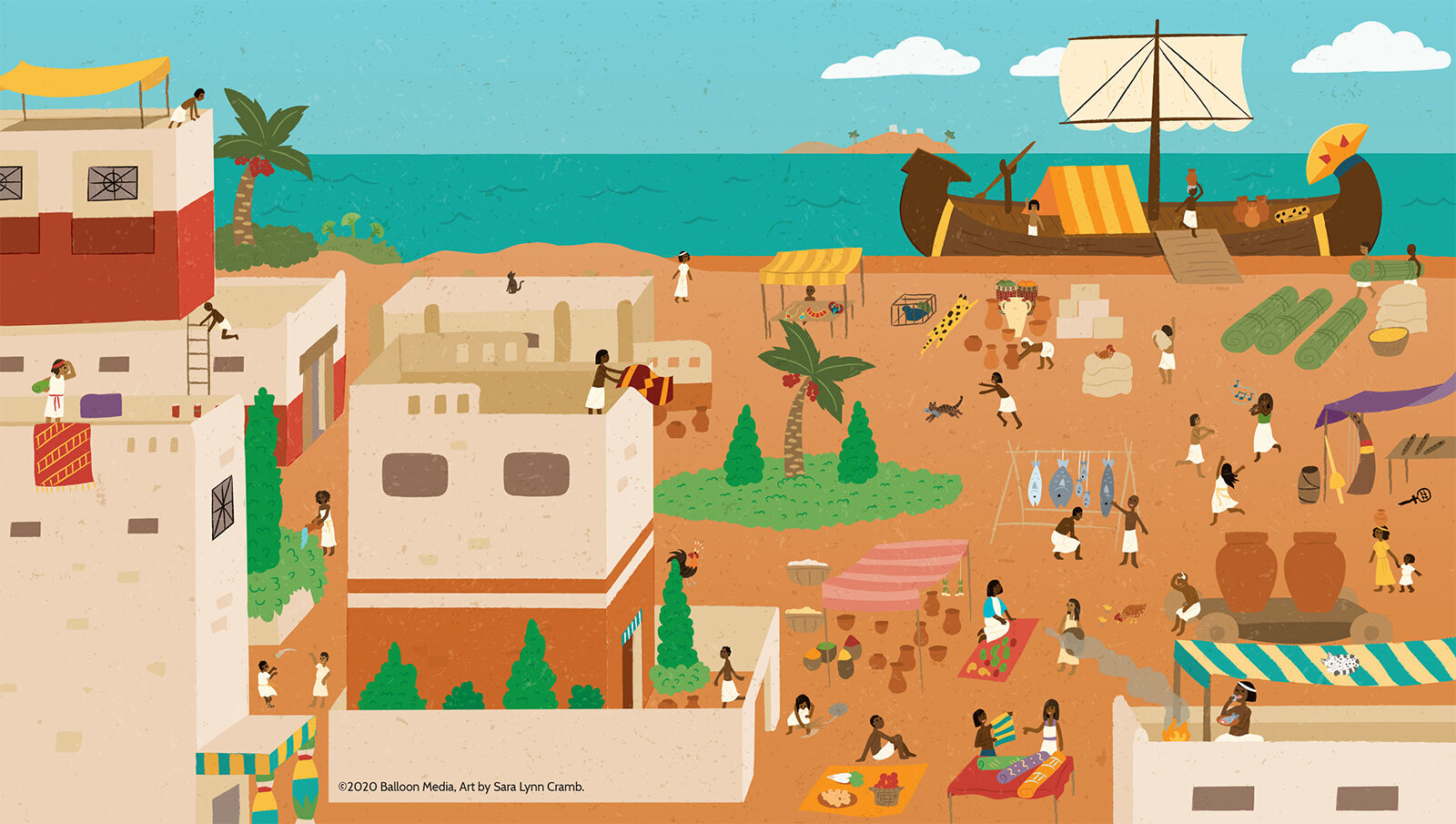
This illustration of an ancient Egyptian marketplace was created for a French language educational children’s activity book
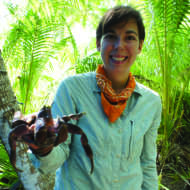
I’m an illustrator and designer with a love of nature, animals, and travel. I create educational work for children’s books, websites, apps and other media with a focus on engaging and educating young audiences about the natural world.
Instagram account: @saralynncreative
Twitter account: @saralynncreativ



